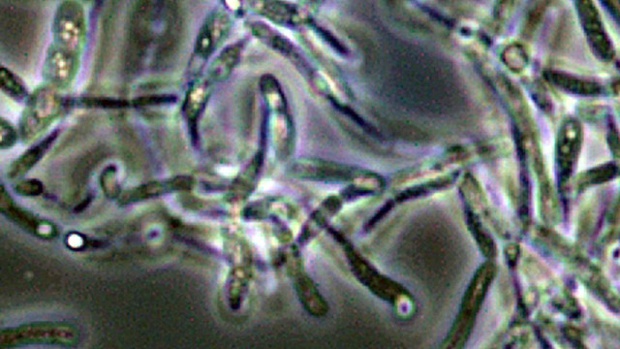WASHINGTON — Nearly eight years ago, the Pentagon faced an embarrassing scandal: The military flew a B-52 Stratofortress from Minot Air Force Base in North Dakota to Barksdale Air Force Base in Louisiana while accidentally carrying nuclear warheads, prompting an investigation that resulted in the firing of Air Force Secretary Michael Wynne and the Air Force chief of staff, Gen. Michael “Buzz” Moseley. The two leaders were removed by then-Defense Secretary Robert Gates, who noted with irritation that systemic problems had gone ignored.
The new Pentagon chief, Ashton Carter, is now dealing with another cringe-worthy issue: The accidental transfer of suspected live samples of the bacterium anthrax from an Army laboratory to more than 50 laboratories in 17 states and to Canada, South Korea and Australia. The mistake has prompted an investigation by the Centers for Disease Control and Prevention (CDC) and the promise of a Defense Department review of all of its laboratories.
The Pentagon review will take place in addition to the CDC investigation, and include the testing of all spore-forming anthrax in the military’s inventory that had been considered inactivated. The live samples shipped were irradiated at Dugway Proving Ground in Utah and thought to be dead, but something went wrong in the process.
Army Chief of Staff Gen. Raymond Odierno said last week that human error was likely not involved, but Carter said over the weekend while traveling in the Pacific that he will find out who is responsible.
Carter’s tenure as secretary of defense began in February, and has been marked thus far by the continued fight against Islamic State militants in Iraq and budget wrangling in Washington, as the Pentagon prepares for life under greater financial constraints following a decade of combat in Iraq and Afghanistan.
But the anthrax incident is something different: An unexpected gaffe that exposed fissures in the handling of deadly material.
As it has in the past, the Pentagon has responded to an unexpected problem by calling for a review. Under the previous defense secretary, Chuck Hagel, reviews were conducted to look at the military awards process, assess the nuclear force after a cheating scandal erupted among dozens of Air Force officers, and investigate the Pentagon’s health-care network.
The review of Defense Department laboratories — called for by Deputy Defense Secretary Robert Work after consultation with Carter — will examine the root cause for the failed irradiation process on the live anthrax samples, the biohazard procedures and protocols used, the adherence to those procedures and the identification of systemic problems and steps needed to fix them.
The Pentagon has not identified the specific facility involved in the anthrax mistake, but it is likely the West Desert Test Center at Dugway Proving Ground. The laboratory has been designated the Army’s major facility for chemical and biological defense testing.
The test center has five divisions, including one focused on biological threats like anthrax. It is under the control of the Army Test and Evaluation Command, which runs military test centers across the country that examine everything from the lethality of conventional weapons to the effects of electronic warfare.
The Pentagon’s review will be led by Frank Kendall, the undersecretary of defense for acquisition, technology and logistics. He is expected to report back to Work within 30 days.
The use of irradiation to kill anthrax gained widespread attention after the Sept. 11, 2001, attacks when spores were mailed in letters to media outlets and government offices, killing five people and infecting 17 more.
The process of irradiation involves passing packages under electron beams that kill live spores. The Army laboratory conducted the irradiation process on the samples in question, and shipped them through commercial services, including FedEx.
Send questions/comments to the editors.



Success. Please wait for the page to reload. If the page does not reload within 5 seconds, please refresh the page.
Enter your email and password to access comments.
Hi, to comment on stories you must . This profile is in addition to your subscription and website login.
Already have a commenting profile? .
Invalid username/password.
Please check your email to confirm and complete your registration.
Only subscribers are eligible to post comments. Please subscribe or login first for digital access. Here’s why.
Use the form below to reset your password. When you've submitted your account email, we will send an email with a reset code.